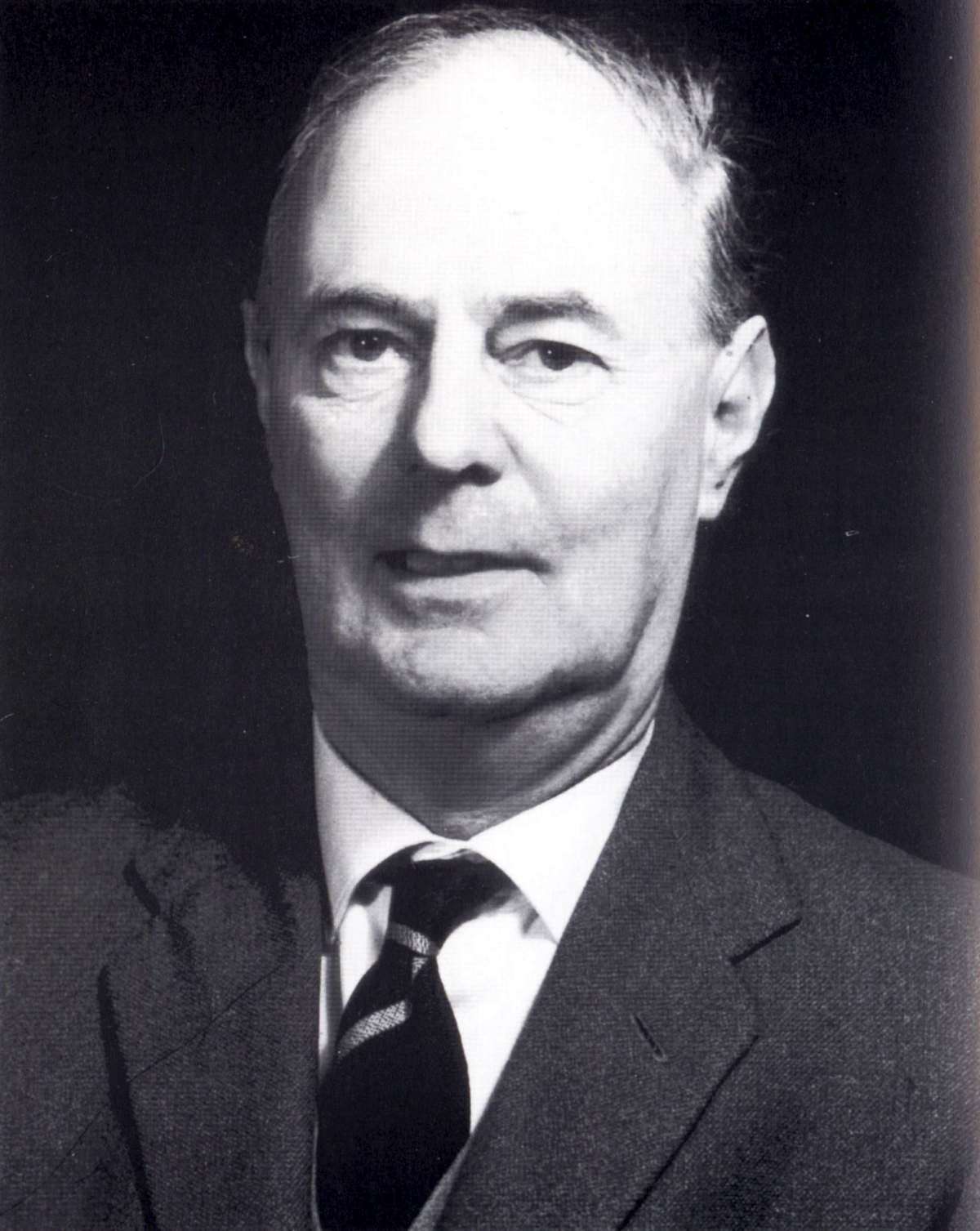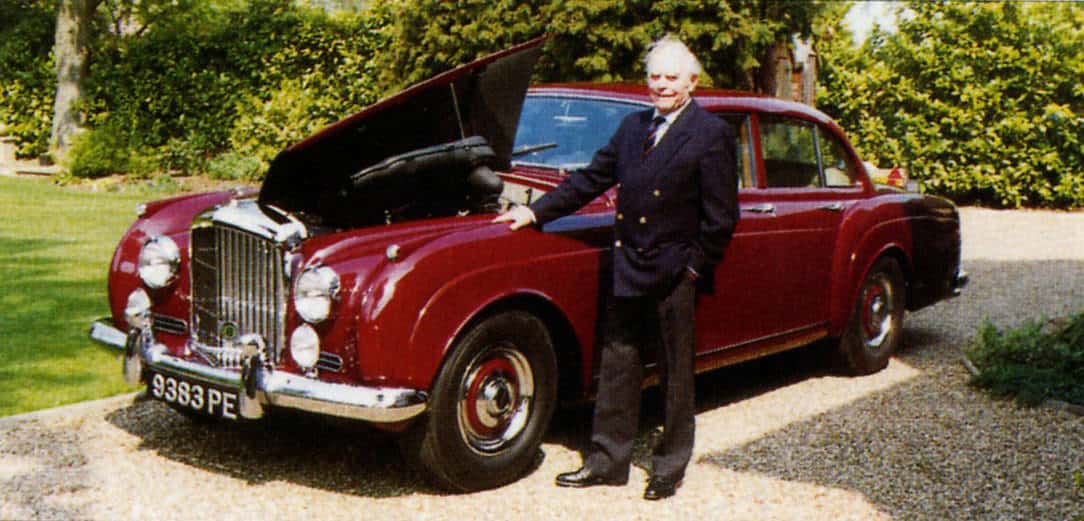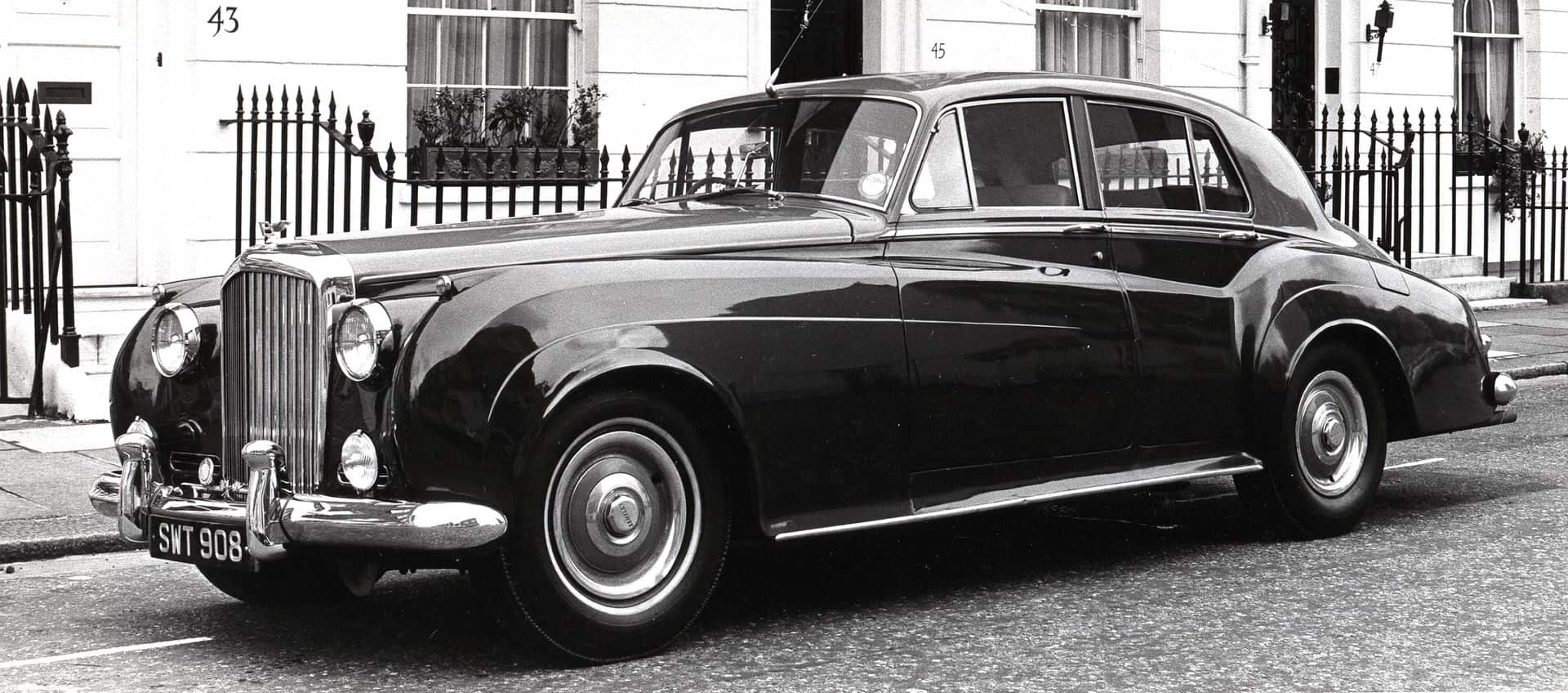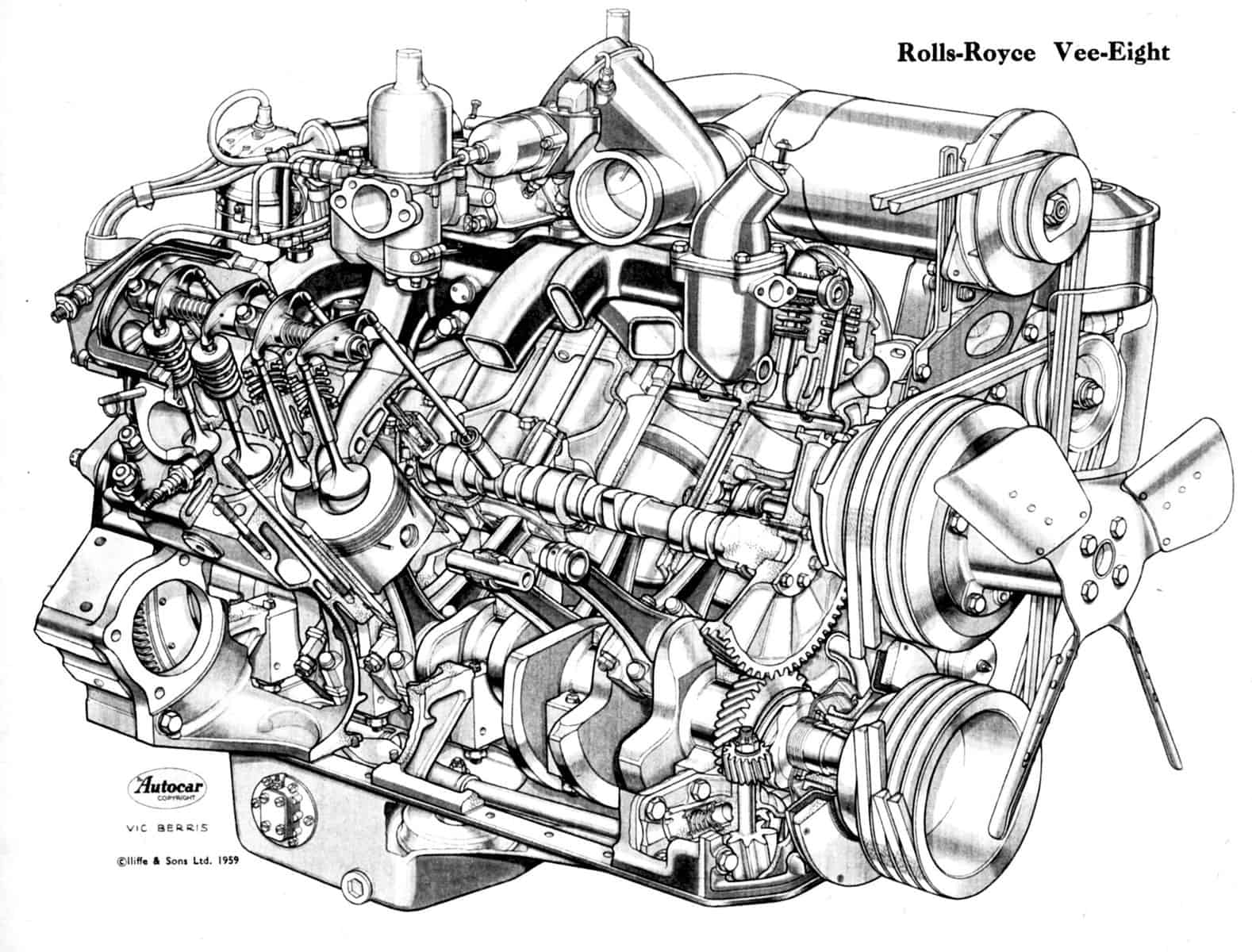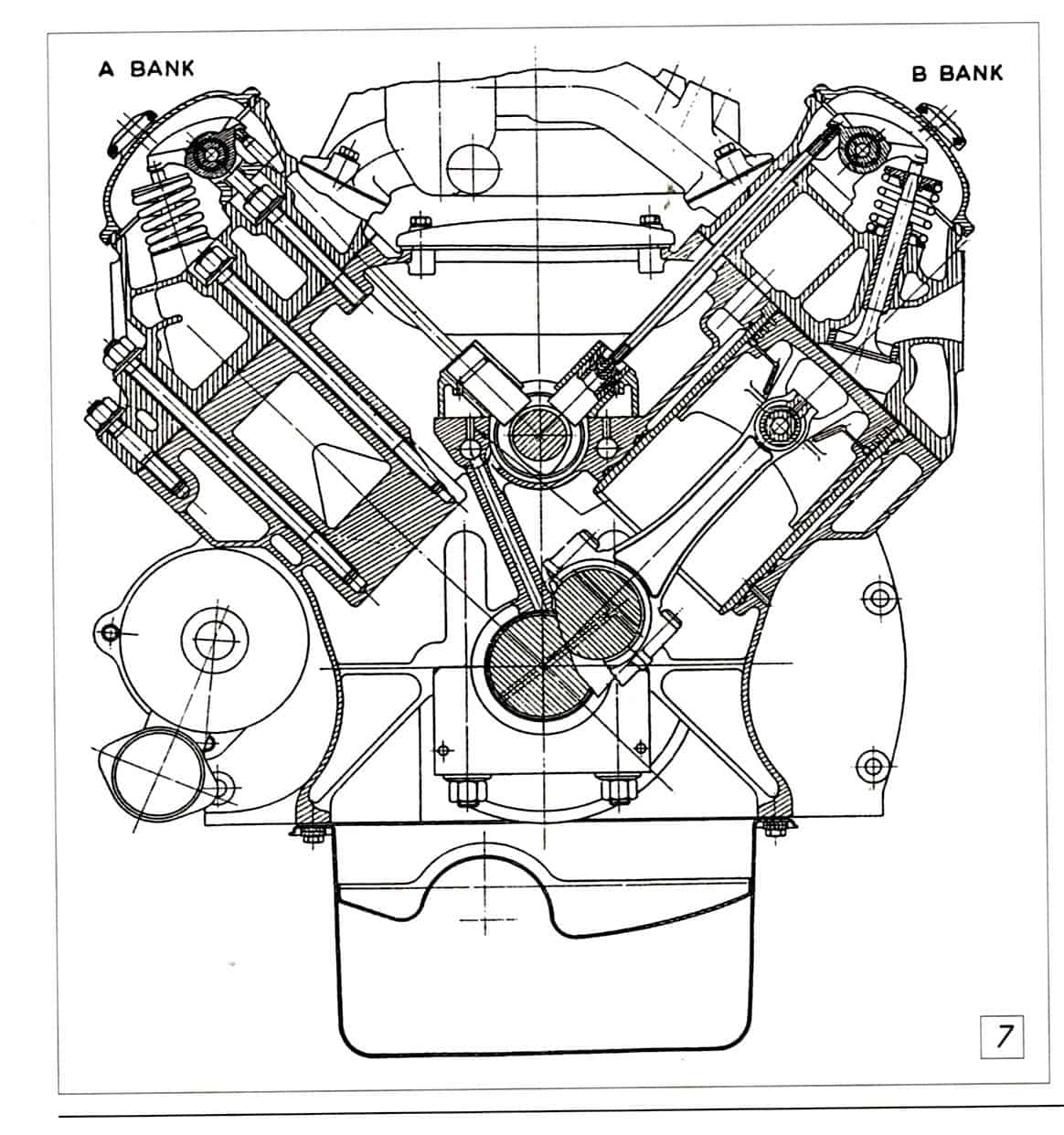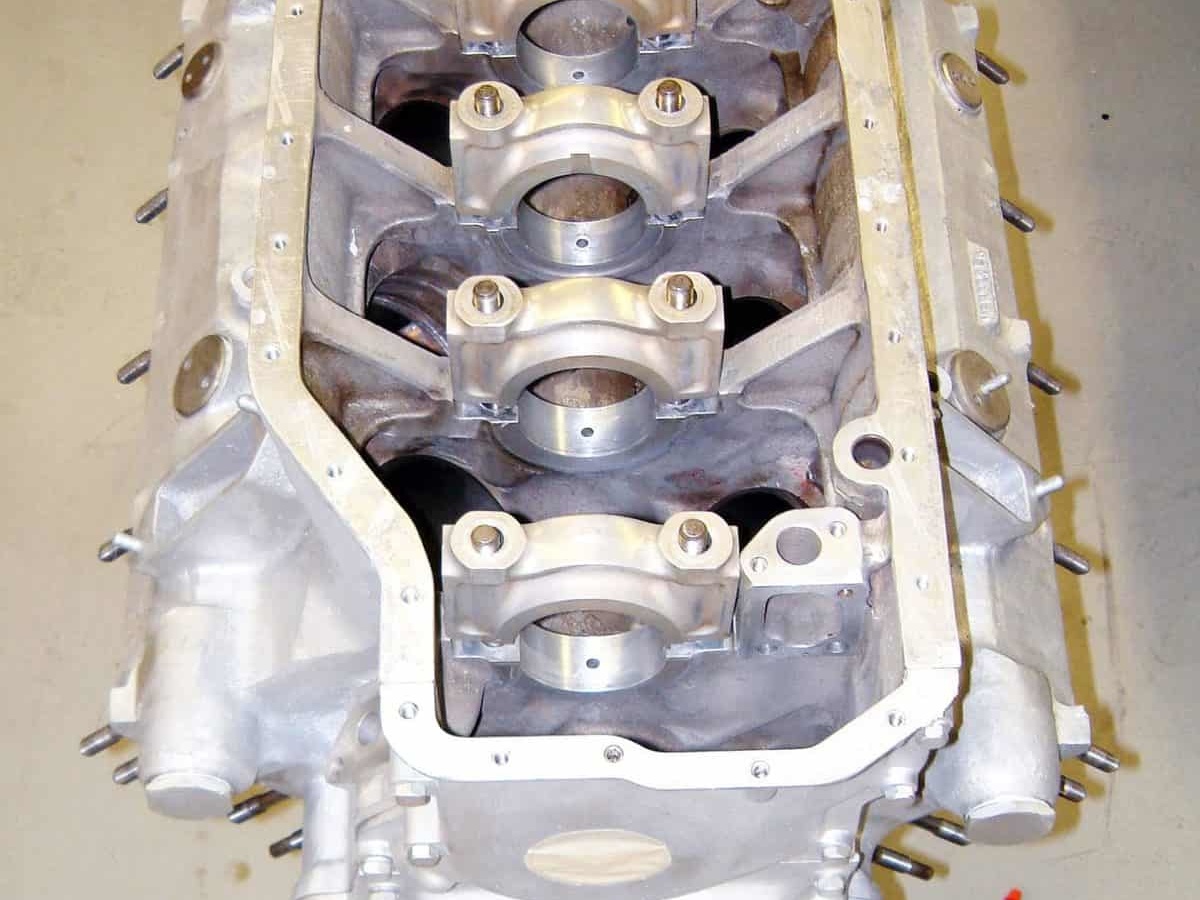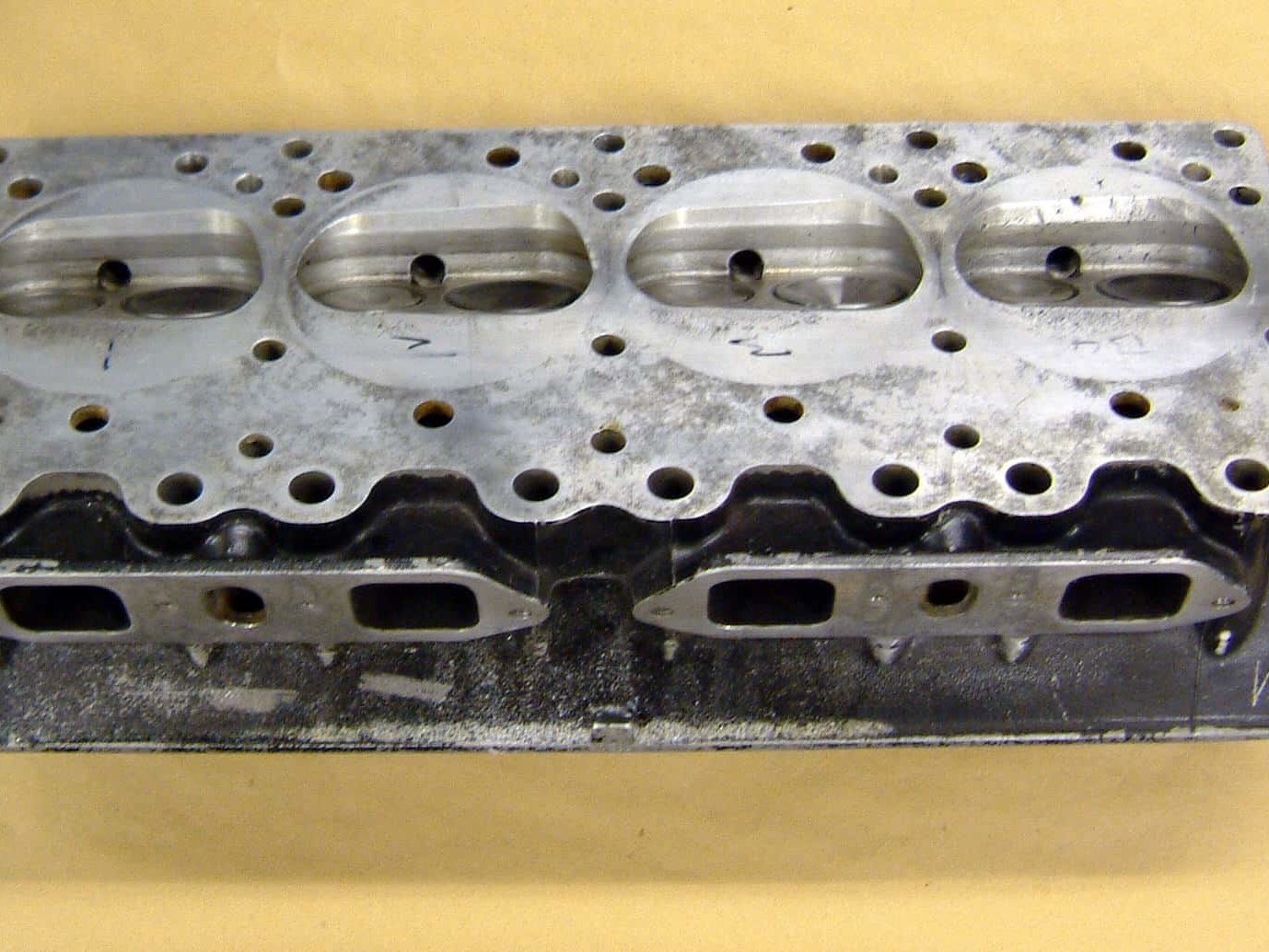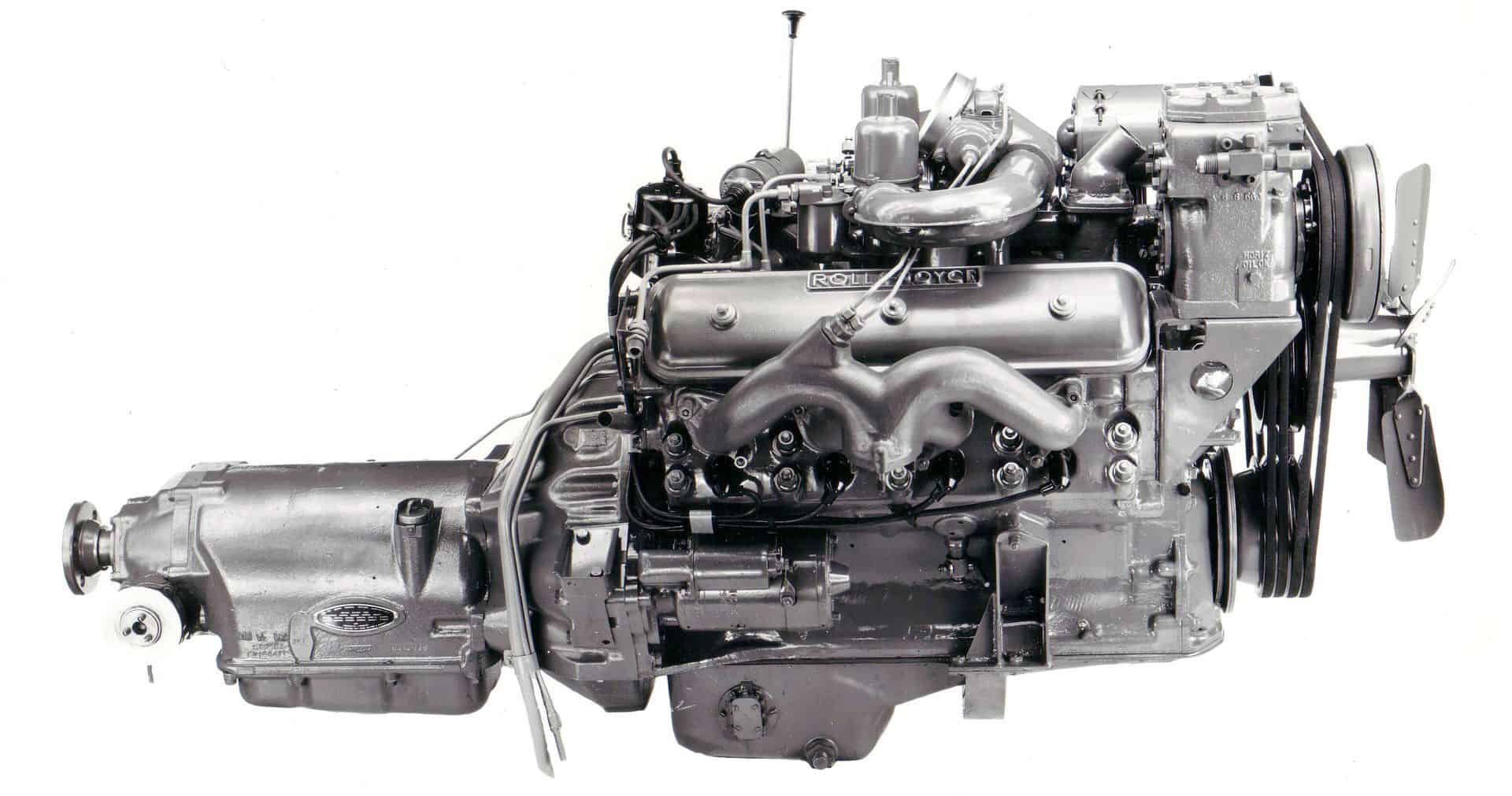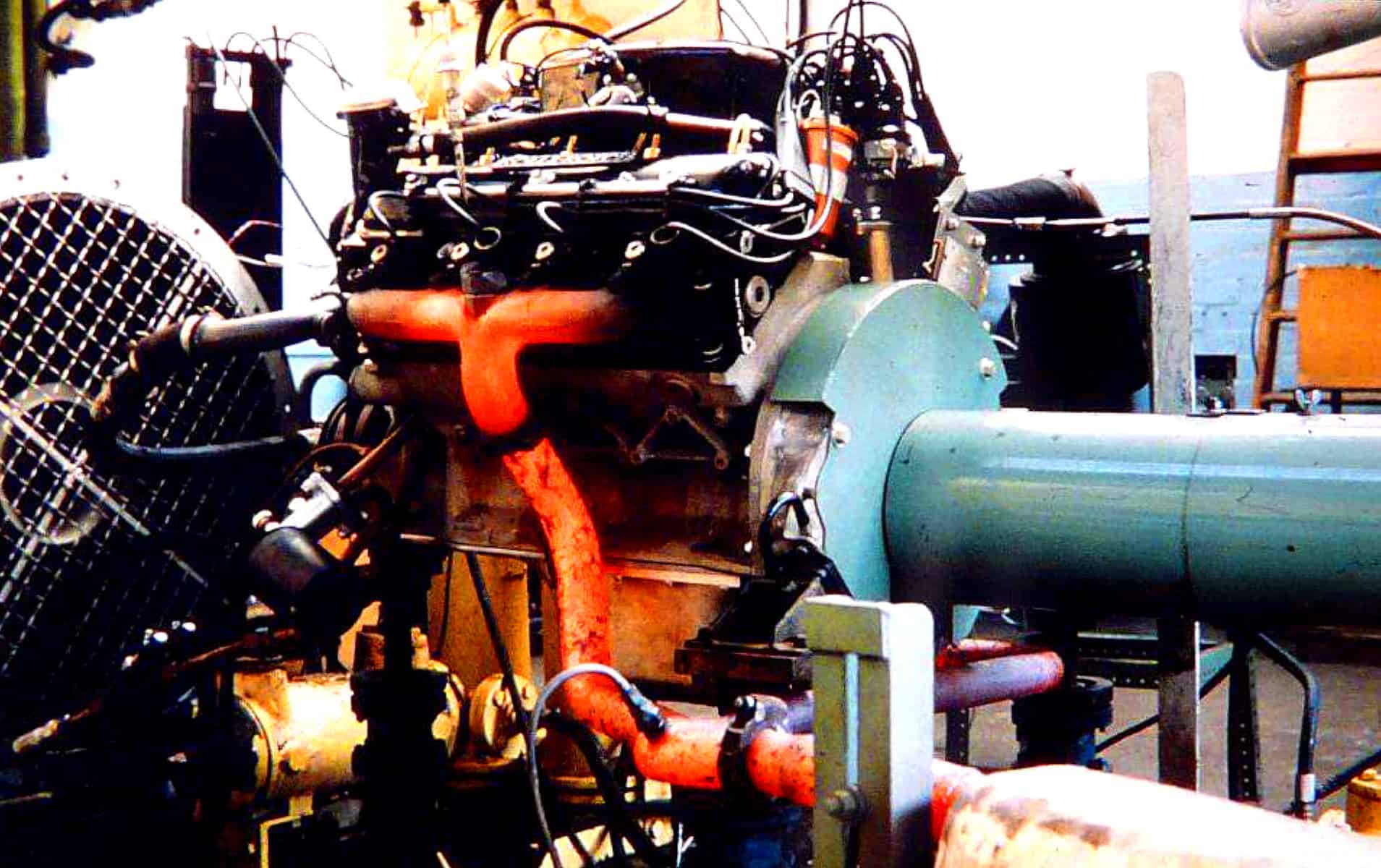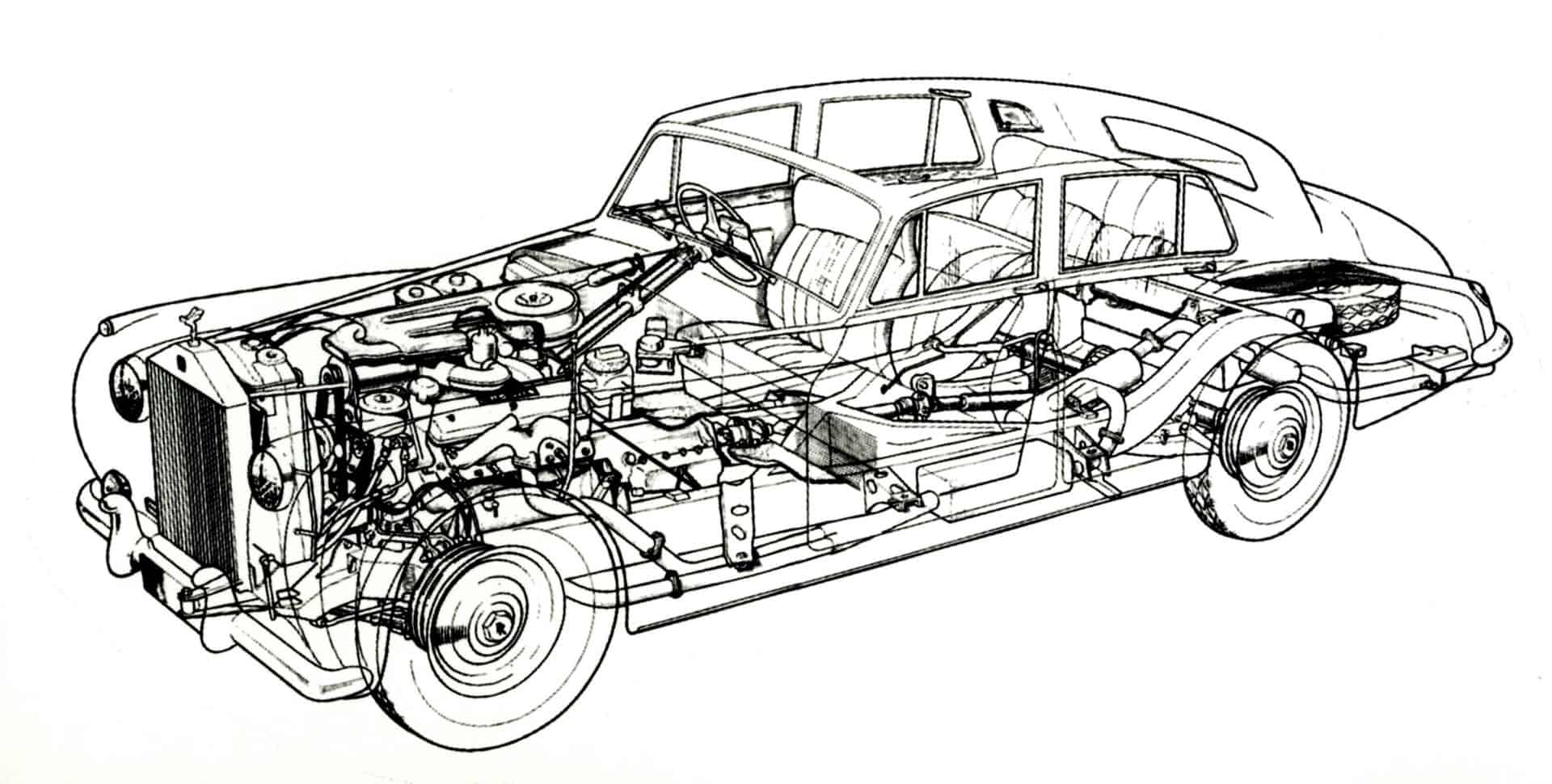Inside the Rolls-Bentley Great Eight
When Rolls-Royce chose a V-8 for a new engine after the war, its designers could hardly have imagined it would serve both Rolls and Bentley for an astonishing sixty-three years
BY: KARL LUDVIGSEN
PHOTOS: BENTLEY MOTORS/LUDVIGSEN PARTNERS
A great engine that shrugged off its pensioning time after time is finally reaching the end of the road. The L-Series V-8, which made its debut in both Bentleys and Rolls-Royces in 1959, was kept alive by Bentley at the Crewe factory after its acquisition by the VW Group at the end of the twentieth century.
Ironically, one of the most pressing issues that helped trigger the company’s sale was the perceived need for a completely new engine to replace the existing L410 vee-eight and the amount that would cost!
In its final format the 6.75-liter L410HT will make its exit this summer under the bonnet of a thirty-unit commemorative version of the Mulsanne 6.75 Edition by Mulliner. Taking its place as Bentley’s flagship offering will be a new Flying Spur, powered by a twin-turbo W-12 of 6.0 liters, producing 626 hp. That’s the engine already powering the Continental GT to more than 200 mph.
The need for a new engine was also the spur to the V-8’s creation. In charge at Crewe as general manager for cars from early 1946 was engineer Lawrence Llewellyn Smith. Shadwell Harry Grylls, who had been technical production engineer at Crewe, was elevated to chief engineer of cars. Among Grylls’ lieutenants at Crewe was designer Charles Jenner, who had led engineering work on the B-Series inline engine family with Jack Phillips a member of his team. Any new designs had to pass the muster of veteran Stan Smith, in charge of the experimental machine shop.
Introduced in 1955 as the R-R Silver Cloud and Bentley Series S, Crewe had new cars with old six-cylinder engines of 4.9 liters. This was decisively the last gasp of the F-head six, whose main dimensions dated from an overhead-valve, 3.2-liter six introduced in 1922. A member of the B-Series family was the B80 straight-eight, which produced some 170 hp from 5.3 liters and could be as big as 6.5 liters. A test car was dubbed the “Scalded Cat” for its performance.
This cut little mustard with Harry Grylls. “A straight eight would necessarily mean increasing the length of the bonnet and moving the front wheels farther away from the driver,” he said. “The difficulty of making a nice motorcar free from the sensation of ‘jellying’ varies with the cube of the distance from the driver to the front wheels.”
Eight cylinders made sense, to be sure, but to avoid “jellying” they had to be in a shorter package—like a V-8. Cars chief Llewellyn Smith was familiar with the concept. After joining Rolls-Royce from Oxford in 1933, one of his early projects had been an analysis of Ford’s revolutionary V-8. In fact, however, the first look at such an engine took place outside Smith’s purview. In 1950 a small group of the aero-engine makers at Derby had proposed a 5.4-liter V-8 with heads much like the Chrysler Hemi’s.
Though this was a promising design from the Derby team, it had competition from Crewe. Early in 1954 Harry Grylls picked up his phone and rang Jack Phillips, recently promoted to head of engine design. Phillips recalled “quite clearly the usual request when my office phone rang. Grylls, on the other end: ‘Can you come along a minute?”’
“Our car engine is running out of steam,” Grylls told Phillips. “We need an engine which will fit within the bonnet of the present car. Go away and think around a 50 percent increase in power and torque.” Here was a dream assignment for an engine designer, one in the execution of which Phillips felt he wouldn’t be second-guessed to death. “I had known Grylls since the early 1930s,” he said. He was “a boss who gave broad-brush instruction of requirements and left the design to the designers.”
Phillips added, “He proceeded to lay down a broad specification for the future power unit. He said it must weigh no more than the then-present production inline six-cylinder; it must use the same radiator frontal area and be no more costly.” All these stipulations, with a 50 percent increase in power and torque, together with the usual reliability and unobtrusiveness expected of a Rolls-Royce power unit, was a formidable challenge to the engine-design team.
Good old cubic inches had to be the source of additional power. They would need eight cylinders and the 90-degree vee their best disposition. The clincher was that the vital American market was crazy about V-8s. In 1955 three-quarters of cars sold in America were eights. The vee-eight had entirely displaced the straight-eight. “Buyer response to the new higher-powered V-8 engines has been tremendous,” said US industry bible Automotive News.
For the first experimental engines, said Phillips, “the bore and stroke chosen was 3.8 x 3.5 inches, giving a swept volume of 5.2 liters.” The bore size of 3.8 inches became part of the new engine’s designation. Following the R-R identifying-letter tradition the eight was the L-series, while the bore size made it the L380 [this also doesn’t entirely make sense to me]. The chosen bore, 96.5 mm, was akin to that of the Derby design while the 88.9 mm stroke was shorter. This enlargement of only 6.5 percent from the six was unlikely to give the mandated increase in output However, the V-8’s design was protected to allow future capacity increases.
The design’s bore-centre distance of 4.65 inches was significantly longer than the similar spacings of Cadillac and Chrysler V-8s, which were 4.40 and 4.56 inches respectively. It was identical to the spacing of the prewar R-R Phantom III V-12, although that had a bore diameter of only 82.3 mm. The opportunity provided by this generous spacing would not go unexploited.
The choice of material for the cylinder heads was a no-brainer. They would be made of aluminum, like the Phantom III and the latest version of the B60 six. For the block, on the other hand, there were many pros and cons. Cost, weight, strength, noise transmission, heat transfer, and production were all issues. They chose aluminum, nominating the high-silicon LM8.
Were dry or wet cylinder liners to be used? The decision fell in favor of wet liners, exposed directly to the coolant. Instead of being pinched between upper and lower flanges, as was the Italian style, the liners followed Phantom III practice in hanging free from their tops. The liners were produced from centrifugally cast high-phosphorus iron pots. Honed to a finish of approximately 30 microinches, their bores provided an oil-retaining surface.
A novelty for Crewe was a pressed-steel sump instead of the traditional aluminum casting. The engine having shown an appetite for oil, this was extensively tested to achieve a design that would allow ample capacity without requiring a level so high that the whirling crankshaft would cause excessive aeration of the lubricant. Designing and producing the dipstick became a project in its own right that absorbed a disproportionate amount of engineering time.
Although the first engine designs had conventional solid tappets, “a design change was made immediately to hydraulic tappets running in cast-iron tappet blocks,” Phillips explained. Here was a technology for which it was sensible to get help from America, where such lifters were in wide use. “To do a Rolls-Royce job one needs to be better than anyone else,” said Phillips, “but there is no sense in ‘re-inventing the wheel’ and hydraulic tappets were a case in point.”
He added, “I went to America, had a good look around and ordered several sets of tappets from Chicago Screw, who made tens of thousands a day.” Starting late in 1958 the first five hundred tappets for production came from Chicago Screw—following a Chrysler design—because, as Phillips said, “no one in the UK could make them, so when they proved satisfactory Rolls-Royce, in its inimitable way in those days, bought the necessary machine tools, built a clean room, and set about making them.”
Topping the new block were ambitious cylinder heads. Like the 1950 Derby proposal the new design from Crewe had vee-inclined valves in a hemispherical combustion chamber. The first test cars of 1956 seemed unconvincing in performance, Jack Phillips recalled: “I remember Stan Dean, an experimental test driver, christening it ‘the gutless wonder,’ so we had a vee-eight versus six-in-line race up Pyms Lane, Crewe, from a standing start, which dismissed the ‘gutless’ part of his remark! The V-8 was much smoother than the six-in-line and its gentility was mistaken for lack of power.” But it was heavy and too wide to fit in the exiting cars.
A new design of cylinder head was started to halve the weight of the previous head and increase the combustion squish area. This was more conventional with a single row of rocker arms operating valves in line in wedge-type chambers. This type of chamber allowed a larger area of the head to mate closely with the piston crown at top dead center, enlarging the space from which the fresh charge “squished” outward, creating desirable turbulence as the piston rose.
“This project was a design experiment,” said Phillips, “but on one of his infrequent visits to the drawing office Dr. Llewellyn Smith became interested, and we were told to proceed to fruition.” When built and tested this simpler head was found to reduce the ignition advance requirement by half, a clear sign of more energetic combustion. It also reduced engine weight by 30 pounds and met the Grylls mandate of a slimmer plan view.
A signal and distinctive feature of the engine was the manner in which the ten main stress-bearing studs on each cylinder bank reached right down into the heart of the block, securing the main-bearing webs, to ensure that stresses were dealt with at source. Concomitantly the main-bearing studs penetrated far upward into their webs. Throughout the V-8 most of the studs were elegantly waisted, as in an aero engine, with many anchored in steel Helicoil inserts to guarantee a good grip in the aluminum and facilitate servicing.
Close to the exhaust valves, as good practice dictated, the spark plugs were “placed purposely in a position immediately over the coolant jet from the main coolant-inlet galleries,” according to Phillips. “Thus, although the plugs are not placed in the best position from the standpoint of accessibility, exceedingly good life results.”
Plug accessibility was indeed dire, said R-R expert Andrew Wood: “When you changed sparking plugs you used to take the wheel off and take the panel down under the wing but you soon learned that you could do it by hand when you couldn’t see anything. So I could do a set of sparking plugs on an S2 with my eyes closed.”
A strong contribution to the V-8’s slenderness was made by inclining its valves at 28.5 degrees from the vertical, a much steeper angle than was common in American eights with similar chambers, which ranged from 9 to 22 degrees. “Pressed-in valve seats were included for the first time in a light-alloy engine,” Phillips explained. “Previously they had been screwed in à la Merlin. The result was a notable improvement in idle quality.”
Apart from an initial sensitivity to knocking below 3,000 rpm, the new “ramp” combustion chamber performed satisfactorily. However, although specific power was all very well, only total engine power and torque—especially the latter—would move Rolls-Royce and Bentley drivers. It was time, the engineers decided, to take advantage of the capability for stretch that they’d designed into their V-8.
For its launch the V-8’s bore was enlarged from 3.80 to 4.10 inches and stroke lengthened from 3.50 to 3.60 inches. The result was a capacity of 6,230 cc and a new designation of L410 to reflect the final bore diameter. By European standards the L410 was a big engine, indeed the biggest.
During the 1950s, however, the horsepower race had been in full swing across the Atlantic. Cadillac and Pontiac were pikers with only 6,384 and 6,364 cc respectively while Oldsmobile made do with 6,466 cc. Serious capacity was offered by Chrysler at 6,769 cc while the largest were Lincoln and Mercury sharing a 7,045 cc V-8. In comparison the new R-R/Bentley eight was “adequate,” to be sure, but no colossus.
In their race for supremacy none of these American makers dared to come to market with less than 300 gross horsepower. This was the background against which the Crewe marketers avoided declaration of their output. In its 6.25-liter format the L410 V-8 developed a net 183 hp as installed in the car and 240 hp gross. Matching or surpassing everything on offer in Europe save the biggest-engined Ferraris and Maseratis, its net torque of 258 lb-ft gave the imperious, serene performance that Rolls and Bentley owners considered their right and privilege.
Initial development work on the L410 was carried out with two American Carter dual-down-draught carburetors mounted at the center of a manifold similar to those of existing V-8s. It was of split-level design with each side serving the central cylinders on one bank and the outer cylinders on the facing bank. The air-side tract consisted of curved aluminum ducts—familiarly known as “cow’s horns”—fed by a large central choke valve.
From the crank nose, outboard of the damper, a four-sheave pulley drove the vee-belts to the V-8’s accessories: water pump, fan, dynamo, and air-conditioning and power-steering pumps. This was a let-down for the engineer editor of Road & Track, John R. Bond. “Frankly,” he wrote, “this layout is rather disappointing to us—we had hoped for a nice clean appearance with all these extra gadgets neatly built in and gear driven.” On the Phantom III V-12 the dynamo and the water pump, in tandem, were gear-driven.
Weighing 713 pounds with its clutch and all accessories, the L410 eight undercut the mass of the 4.9-liter six by 30 pounds in spite of its 27.5 percent increase in swept volume and substantial enhancement of power and torque. As is obvious from this history of its creation the new eight was a completely indigenous design by the team at Crewe.
Several generations later the Bentley V-8 bows out, giving almost three times the horsepower that it had at birth, helped by a longer 99 mm stroke that took its final displacement to 6,746 cc. For a time, said Bentley, its torque of 811 lb-ft was the highest of any engine in production. For the thirty commemorative Bentleys a picked crew of seven built the last of the 36,000-odd V-8s that powered Rolls-Royce and Bentley cars. Most will still be in service for decades more.

